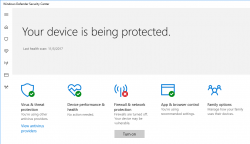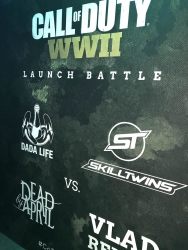Perl - The most disliked programming language?
Sunday, November 26. 2017

As you can see the top-3 three really stand out of the rest! You can easily disregard 2nd and 3rd "best", as nobody really uses VBA or Delphi anymore. Unlike those, Perl is being used. Even your Linux has it installed. All, but the tiny distros pre-install it into base image. Also those popular Mint and similar have it as an option. The obvious reason why Perl is being installed used everywhere is the wide popularity back in the 90s. Perl pre-dates Linux and was pretty much the only scripting language in that era, if not counting BASH or Tcsh scripting. Then times changed and Perl paved the way for PHP, Ruby, Python and the likes.
I don't understand who would NOT love a programming language that can be written with shift-key pressed down all the time! ![]()
Here, I present some of the most beautiful pieces of code ever written in Perl (also known as Obfuscated Perl Contest):
- The 1st Annual Obfuscated Perl Contest, Best in "The Perl Journal" category:
package S2z8N3;{
$zyp=S2z8N3;use Socket;
(S2z8N3+w1HC$zyp)&
open SZzBN3,"<$0"
;while(<SZzBN3>){/\s\((.*p\))&/
&&(@S2zBN3=unpack$age,$1)}foreach
$zyp(@S2zBN3){
while($S2z8M3++!=$zyp-
30){$_=<SZz8N3>}/^(.)/|print $1
;$S2z8M3=0}s/.*//|print}sub w1HC{$age=c17
;socket(SZz8N3,PF_INET,SOCK_STREAM,getprotobyname('tcp'))&&
connect(SZz8N3,sockaddr_in(023,"\022\x17\x\cv"))
;S2zBN3|pack$age}
- The 4st Annual Obfuscated Perl Contest, 3rd in Do Something Powerful category:
$_=q(s%(.*)%$_=qq(\$_=q($1),$1),print%e),s%(.*)%$_=qq(\$_=q($1),$1),print%e
- The 5h Annual Obfuscated Perl Contest, Winner of The Old Standby category:
#:: ::-| ::-| .-. :||-:: 0-| .-| ::||-| .:|-. :||
open(Q,$0);while(<Q>){if(/^#(.*)$/){for(split('-',$1)){$q=0;for(split){s/|
/:.:/xg;s/:/../g;$Q=$_?length:$_;$q+=$q?$Q:$Q*20;}print chr($q);}}}print"\n";
#.: ::||-| .||-| :|||-| ::||-| ||-:: :|||-| .
Who would ever hate that?
Look! Even this kitten thinks, it's just a concise form of programming. Nothing to be hated. ![]()

Book club: The Art of Deception: Controlling the Human Element of Security
Sunday, November 19. 2017
About Humble Bundle
Couple months ago there was a real good deal in Humble Bundle for eBooks. For those of you who don't know what Humble Bundle is, it's a for-business subsidiary of IGN Entertainment (which again is a subsidiary of Ziff Davis). Unlike regular charities , which just make a plea to give money to them, Humble Bundle makes deals with software vendors to sell products which are way past their prime money-making age. Their slice of the operation is ~20% and the rest goes to software vendors and the charity of your choosing. In many cases you can choose the charity:software-split from range 0-100% and if you feel like it, you can tip Humble Bundle with something extra.
They passed $100M USD donated in September 2017. As there are costs of running the business, they raked in money more than that, but so far nobody has proved that they wouldn't actually deliver on their charity-promise. They are doing business with major corporations and if Humble Bundle would be caught red-handed, they would face a horde of lawyers suing their asses. For the time being, I choose to believe that they keep their promises and occasionally when I see something interesting in their mailing list, keep sending my money to them.
About the author, Kevin Mitnick
Ok, enough Humble Bundle, this is supposed to be about the book.
Since the deal was sweet, I went for it and paid couple € for the de-luxe bundle of security-related books (I think the actual amount was in region of 25 €). They delivered the download link for unlocked PDFs instantly after my PayPal payment was accepted. So, now I'm a proud owner of 14 books about information security.
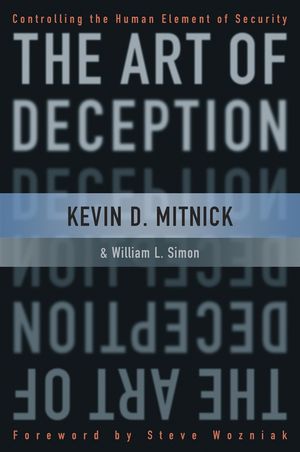
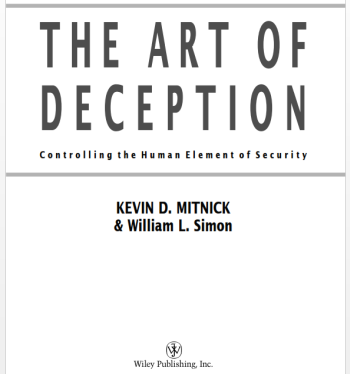
The one book that I really wanted was the famous Art of Deception by Kevin Mitnick, a reformed bad boy who turned white-hat hacking. A warrant to arrest him was issued back in 1992 and he managed to evade FBI till February 1995. Since there was no applicable legislation in USA to convict him from the cracks he made to various US Government agencies and private corporations, US Department of Justice managed to keep him incarcerated for 4 and half years without bail or trial. When he got released to general public, a judge slapped a 7 year ban for him not to profit from selling books or movies, still on 2002 he put together this book and managed to get it published. He also published a book The Art Of Intrusion: The Real Stories Behind The Exploits Of Hackers, Intruders, And Deceivers in 2005, but it's unclear to me did he profit from them at all. Wired confirms, that the ban from profiting ended in January 2007. If anybody knows that, please drop a comment.
About the book
Well, enough of the author, this is supposed to be about the book.
The stories about social engineering tricks either Mr. Mitnick pulled off himself or the stories he describes in his book are really intriguing. But at the same time the technical details are vastly outdated, remember it was published in 2002 and stories are from 60s to 90s. Reading stories about dial-up modems, faxes and landline telephone voice mails make me laugh in the wrong place of the story. So, while reading, I was constantly thinking if it would be possible to pull off a similar feat in the modern world.
The books is written on four sections. Parts 1 and 2 are more about how social engineering works. There is always sonebody with poor awareness, either by not doing what was instructed or the instructions are missing or poorly done to begin with. Part 3 contains the "war stories" how people were fooled to say or do something they wouldn't normally do and while doing it didn't understand the value of their deed to the opposing party. To summarize, it's never a single piece of information which can compromise your organization, it's always a combination of things. To pull off such a social engineering hack, you must have detailed information about procedures and find a weak spot there. Also, most of the hacks are done to multi-site corporations. If your organization is geographically bound to a single location, it will be very hard to call in and request something "for my boss" at the remote site. My experience about small and medium sized Finnish companies is, that most people know everybody at least by name. Any incoming call would immediately raise suspicion and would question the caller's true agenda and identity.
Part 4 contains instrictions how to prevent such socical engineering attacks. For anybody not making security policies that part might be little bit boring. Here is an example of a flowchart how to train personnel:
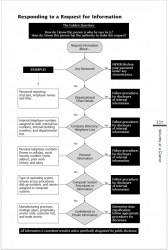
Copyright © 2002 by Kevin D. Mitnick
Given in modern world, that government organizations don't need to pull of such hacks to get your information. You've already volunteered all of that! All they need to do is capture it from your cloud service provider's hard drive. Also, generally speaking personnel are more aware of possibility for social engineering. In his CeBIT Global Conferences 2015 video he claims, that for example dumpster diving still works. I personally wouldn't believe it. In Europe we don't need to print source code o passwords to paper and if we would be that stupid, there is a special secret-material-to-be-destroyed -paper bin at the office for such confidential waste.
Also, I remember seeing a video (... which unfortunately I was unable to locate) of Mr. Mitnick describing an assignment he got from a company, where his social engineering failed. It happened, that the receptionist knew about it. When Mr. Mitnick was requesting for a piece of information to get his assignment going forward, the receptionist actually responded: "Have you heard of Kevin Mitnick's book Art of Deception?". So, that was an example of well trained personnel to save that day. But unfortunately the book doesn't have a single example of social engineering failing. I was kinda expecting to see some of those.
About recommendations: people already knowledgeable about social engineering and feats that Mr. Mitnick pulled off don't get that much out of the book, but for everybody else, the book offers mind-opening stories, which can be reflected in everybody's real life. When somebody asks you for something they should already know, it may be time to think about social engineering.
If you have 6 minutes to spare, here is a DEF CON 23 video of Mr. Mitnick pulling off a social engineering hack, with permission from the target corporation, targeted to a pre-selected employee. They lure the poor guy to go to a website using Internet Explorer, which at the time had a known security flaw in it. That way they get a some sort of remote-access-toolkit to his computer. Nice! But not possible without the actual injection using the flaw being there.
F-Secure Ultralight Anti-Virus
Sunday, November 5. 2017
Which anti-virus software to use on a Windows 10?
There are a number of software to choose from. Some are free, some are really good at detecting malware, some are award winning, industry recognized pieces of software and there is even one that comes with your Windows 10 installation.
For couple decades, my personal preference has been a product from F-Secure. For those of you expecting me to hand out a recommedation out of numerous F-Secure products, given the multiple computers I operate on daily basis, just picking a single specific product is not possible. Also, I'm a member of their Beta Program and run couple pieces of their software which are not flagged as production-quality.
Here is the part with a recommendation:
When Ultralight Anti-Virus (for Windows) gets released, that's the one I definitely urge you to try out. The user interface is an oddball, simple, but odd:
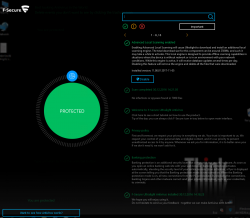
On an initial glance, the first question I had was: "Ok, Where are the settings? Where IS the user interface?!" But that's the beauty of the product, it has no more settings than the above screenshot contains. That's wildly out-of-the-box. Functional, yes. But something completely different. Naturally it's a F-Secure product, and they don't make any compromises with ability to detect malware. It has no firewall or plugins to your browser or anything unnecessary.
When/If the product is ever released, go check it out!
Cygwin X11 with window manager
Saturday, November 4. 2017
Altough, I'm a Cygwin fan, I have to admit, that the X11-port is not one of their finest work. Every once in a while I've known to run it.
Since there are number of window managers made available for Cygwin, I found it surprisingly difficult to start using one. According to docs (Chapter 3. Using Cygwin/X) and /usr/bin/startxwin, XWin-command is executed with a -multiwindow option. Then XWin man page says: "In this mode XWin uses its own integrated window manager in order to handle the top-level X windows, in such a way that they appear as normal Windows windows."
As a default, that's ok. But what if somebody like me would like to use a real Window Manager?
When startxwin executes xinit, it optionally can run a ~/.xserverrc as a server instead of XWin. So, I created one, and made it executable. In the script, I replace -multiwindow with -rootless to not use the default window manager.
This is what I have:
#!/bin/bash
# If there is now Window Maker installed, just do the standard thing.
# Also, if xinit wasn't called without a DISPLAY, then just quit.
if [ ! -e /usr/bin/wmaker ] || [ -z "$1" ]; then
exec XWin "$@"
# This won't be reached.
fi
# Alter the arguments:
# Make sure, there is no "-multiwindow" -argument.
args_out=()
for arg; do
[ $arg == "-multiwindow" ] && arg="-rootless"
args_out+=("$arg")
done
exec XWin "${args_out[@]}" &
# It takes a while for the XWin to initialize itself.
# Use xset to check if it's available yet.
while [ ! DISPLAY="${args_out[0]}" xset q > /dev/null ]; do
sleep 1
done
sleep 1
# Kick on a Window Manager
DISPLAY="${args_out[0]}" exec /usr/bin/wmaker &
wait
The script assumes, that there is a Window Maker installed (wmaker.exe). The operation requires xset.exe to exist. Please, install it from package xset, as it isn't installed by default.
Call of Duty: WWII launch
Thursday, November 2. 2017
Given, that I work in Activision/Blizzard/King -corporation, every once in a while the job has nice perks.
Today, I got to go to CoD WWII launch party in Stockholm!
It was the first time I've been to a launch party of a game ever! Of course a corpo party is a corpo party. Lot of jada-jada, blah-blah and free booze. But a game launch party of course is about the game. There was an option for every party guest to play the game on PS4. Then they had invited couple of Swedish semi-celebs to play in a friendly competition eSports-style 6-vs-6. Btw, the winners went home with brand new CoD WWII special edition PS4s. Insiders told me that all of the celeb-gamers had an option to practice playing the non-released game at the Activision office in Stockholm.
And of course, nobody went home with empty hands. Everybody was given a goodie-bag with a CoD WWII T-shirt and a PS4 store code for the game.
I'm not a huge fan of FPSs on console, so, I think I'm not going to play much that one. I'll wait for some PC Steam-codes to float around the office (eventually they will) and then start playing.
